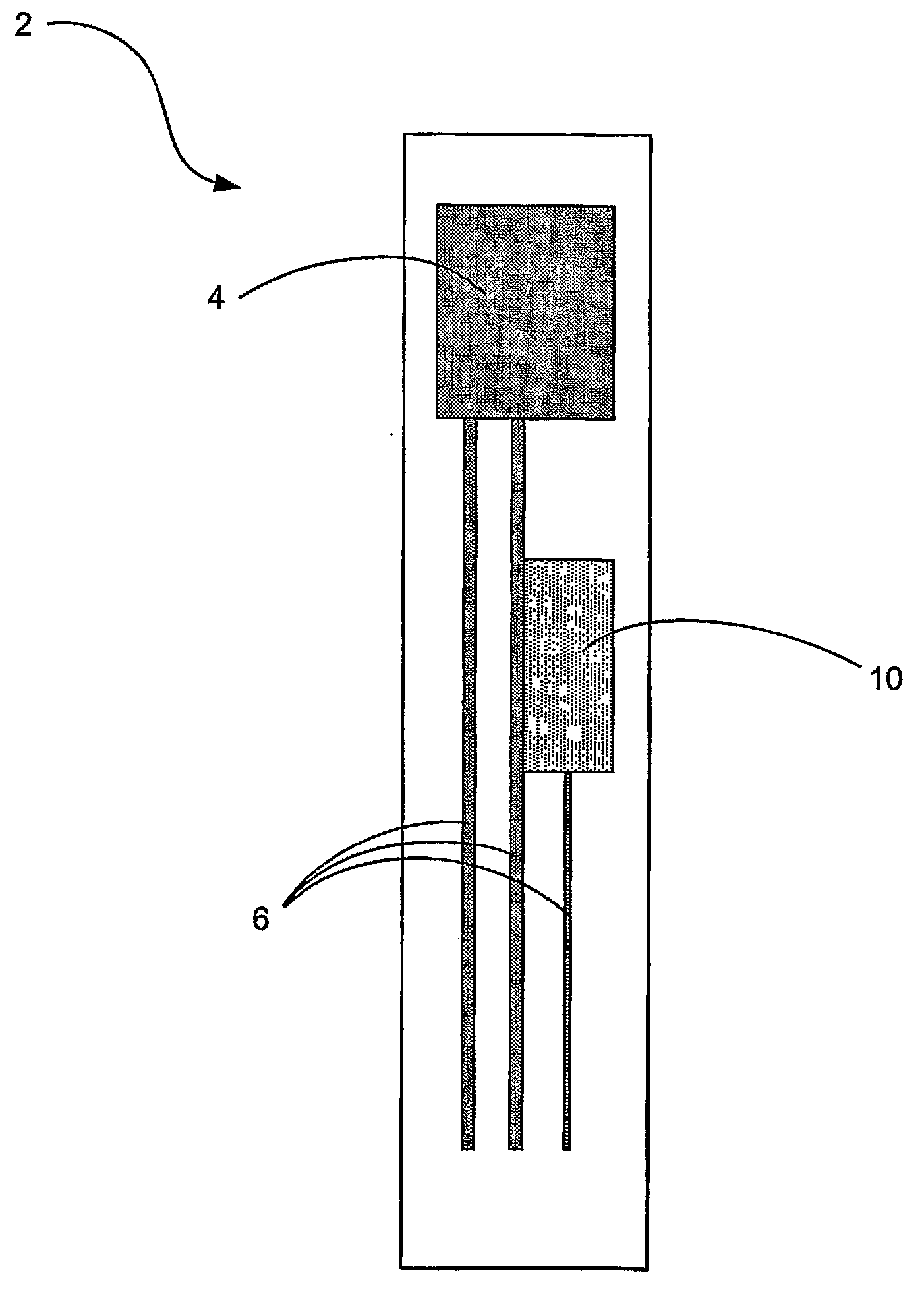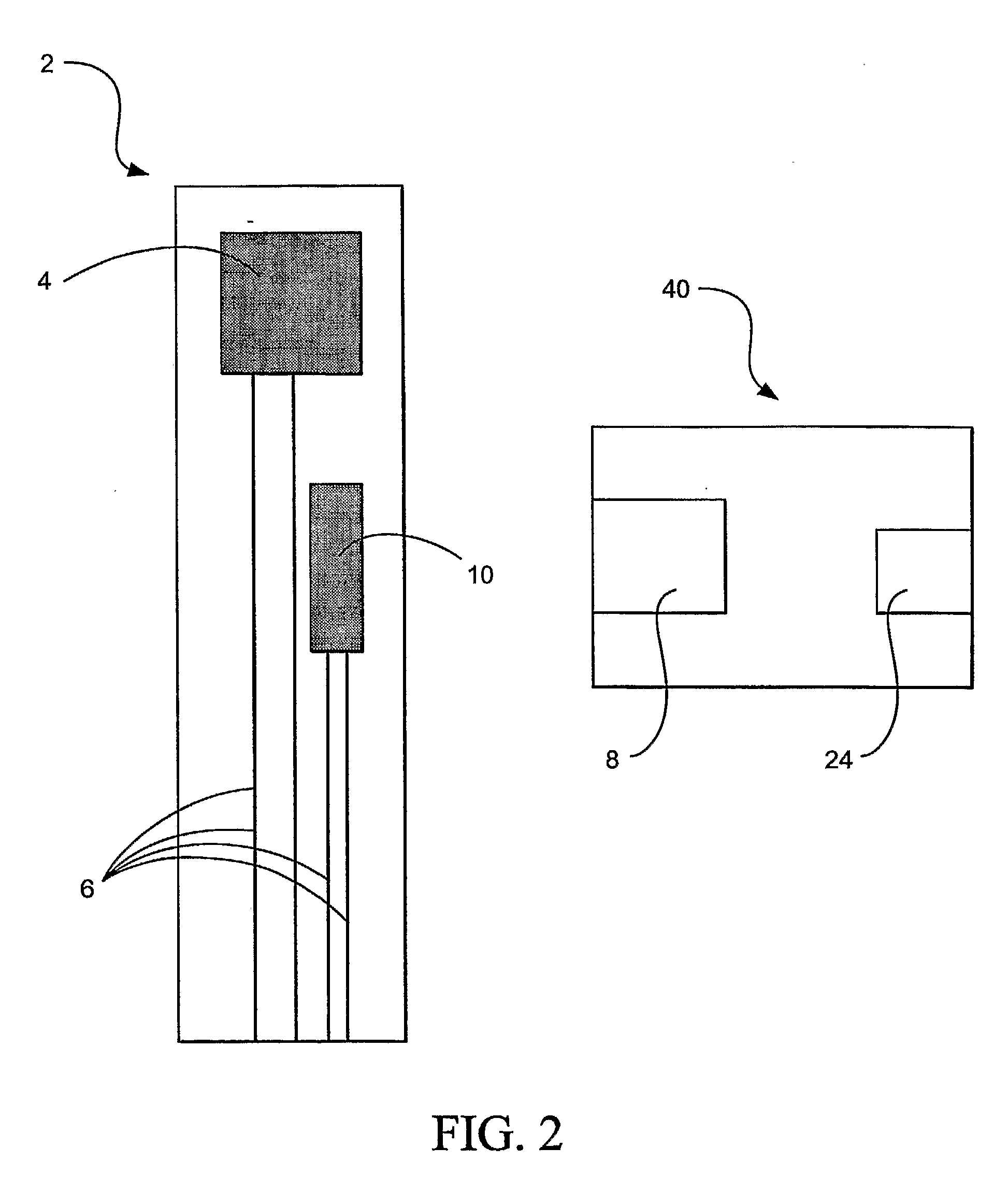Failure to control blood glucose levels within a recommended range can result in serious healthcare complications such as
limb amputation and
blindness.
Furthermore, failure to accurately measure blood glucose levels may result in hypoglycaemia.
Under such conditions the
diabetic patient may initially enter a comatose state, and if untreated may die.
People suffering from diabetes are often at a higher risk of other diseases.
Diabetes also contributes to
kidney disease, which occurs when the kidneys do not filter properly and
protein leaks into
urine in excessive amounts, which eventually can cause
kidney failure.
Diabetes is a cause of damage to the
retina at the back of the eye and also increases risk of
cataracts and
glaucoma.
Nerve damage caused by diabetes may interfere with the ability to sense pain and contributes to serious infections.
This can be undesirable since it can take time for a user to learn proper use of the process involved in diabetes testing and errors of operation by a user can occur.
It is also undesirable since a user may be put off by tedious repetitive action of inserting calibration codes into a
blood glucose monitoring system, which reduces the accuracy of glucose levels and can lead to complicated health conditions.
It is further undesirable since repetitive testing on a localised area results in lack of feeling especially around the finger tips (nerve damage) and calluses can form making operation of the buttons difficult.
This creates a problem for diabetics as technology pushes miniaturisation to new limits, partially driven by the need to make blood
glucose meter systems acceptable and not ‘out of place’ i.e. to make the
diabetic patient to feel as ‘normal’ as possible.
Users can also have difficulty in using such devices because of the
resultant effects of their medical conditions again causing difficulty, entering data via buttons or keypads etc.
Another problem with the
insertion of calibration codes is again that long term diabetes sufferers who have not managed to fully control their illness may be suffering from
cataracts or
glaucoma.
Such illnesses make the use and operation of blood
glucose meter systems problematic with partially sighted sufferers, for whom basic testing could be considered an achievement, let alone inputting of calibration codes into a blood
glucose meter.
Performing
time consuming manual steps potentially minimises the frequency a diabetic tests himself and can lead to a downward spiral for the user e.g., lack of testing resulting in further complications which in turn discourages a diabetic from testing further, for example because of the need to lance and enter calibration strip data into a blood glucose meter.
The confirmation of test calibration data on a display such as an LCD display and / or
LED display can also lead to problems for users of all ages and users of all levels of diabetes.
During pre-breakfast testing a diabetic may have difficulty focusing on such a small display and could enter an incorrect calibration code.
Similarly, a conscientious diabetic wishing to test himself at the post
evening meal or pre-
bed time may be tired and feeling drowsy and may inadvertently input the incorrect calibration code into the blood glucose meter.
Again, this could lead to complicated health conditions especially where a diabetic is about to sleep for the night thinking his glucose level is normal when in actual fact he may be entering an unconscious state because he is in a hypoglyeaemic condition.
The
care giver may not however, be aware that a manual cumbersome calibration code needs to be inputted into the blood glucose meter before testing, resulting in an incorrect calibration code being inputted leading to further complications.
Similarly, since
test strips are small in size, visually-impaired diabetics have difficulty in knowing how many
test strips are left in a
vial.
This can be a problem to diabetics especially when they leave their normal surroundings for a length of time e.g. travelling away on a whim, on holiday etc. and could potentially leave them without enough
test strips for the duration of their time away from home.
Not only is this potentially dangerous to a diabetic, but also is inconvenient.
Another challenge facing the diabetes monitoring industry is the use of monitoring devices by people with disabilities.
When we use the expression “tolerances and variations” we are, of course speaking of small effects, indeed effects so small that it may be uneconomical to engineer them out of the manufacturing process; hence the need for calibration in the first place.
These small effects are large enough to upset the accuracy of blood glucose measurements and indeed the accuracy of any analyte measurement where a certain level of accuracy is needed.
But now we are speaking of a process that is very difficult if not impossible to engineer down to the same level of tolerances.
In any case, the altered or new calibration quantities will no longer be properly represented by the calibration information that was previously printed on the
label, which in turn means that the sensor must be recalibrated.
 Login to View More
Login to View More 


